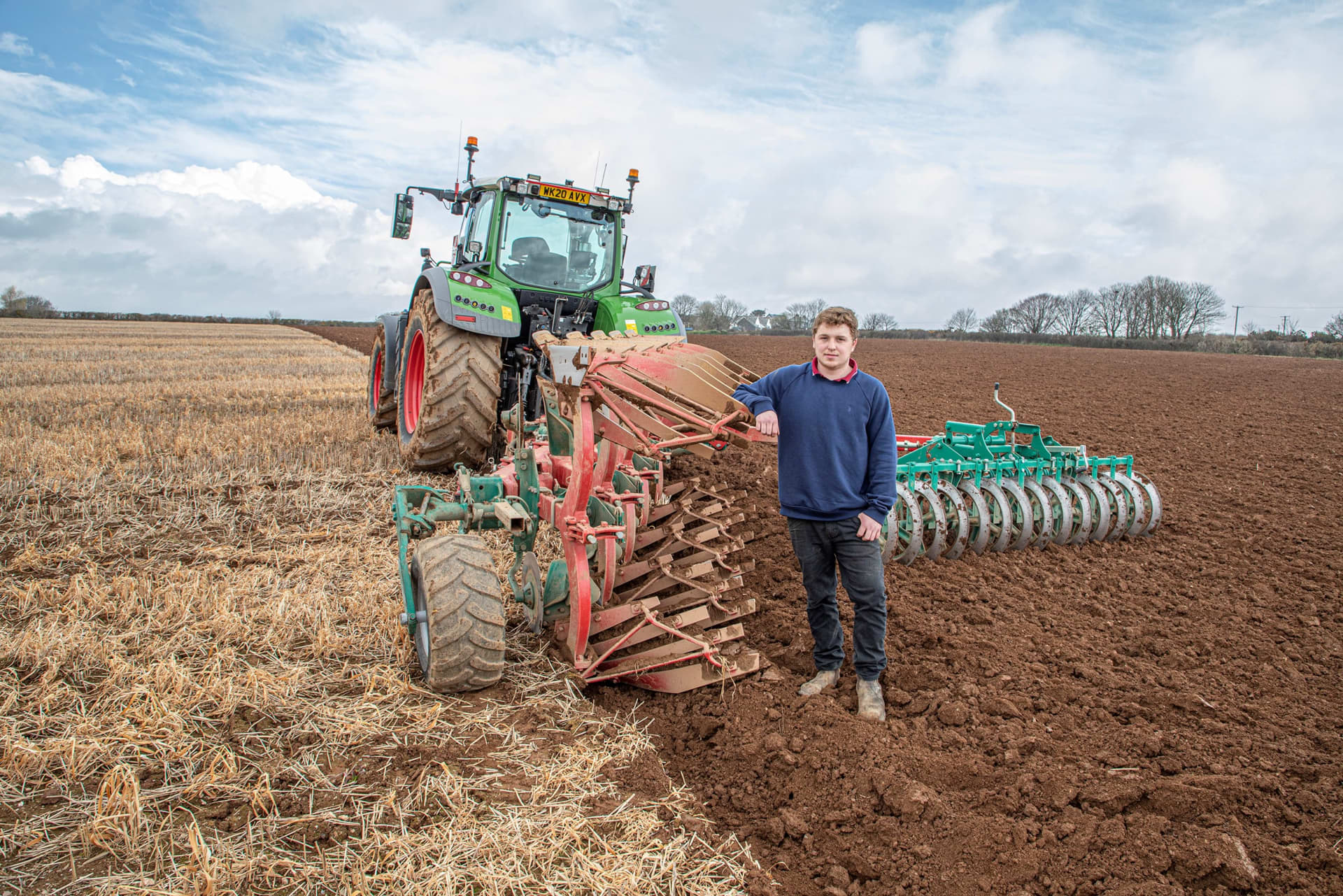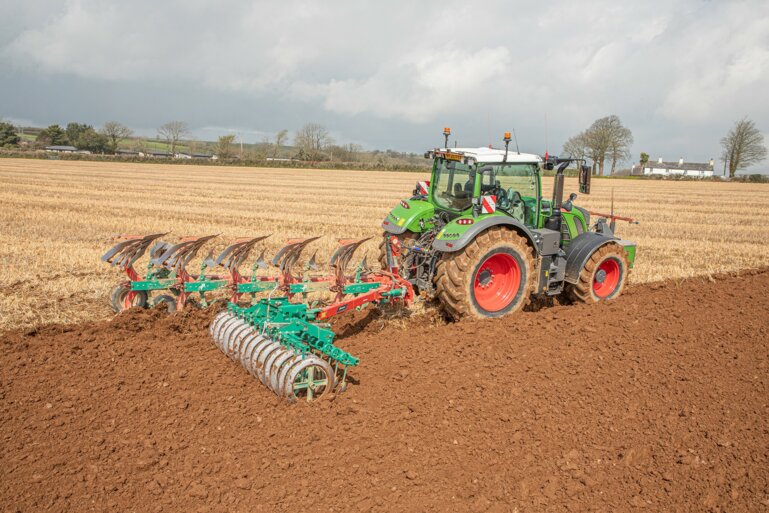“It never goes out of line, and it matches up perfectly pass-to-pass.”
“We’ve run Kverneland ploughs for years, but this is our first one with a Packomat,” explains Mark White. “And based on its performance, we’ll probably have another.”
The farm has three ploughs, with the oldest model kept as back-up. The two newer models handle the bulk of the workload, according to cropping. This includes spring and autumn cultivations, that can see each plough cover around 5-600 acres each year. The five-furrow format is preferred for the convenience of delivering a generous output with 200hp tractors, and its ability to travel safely between blocks of land compared to a larger plough with additional furrows.
“The Packomat is effectively a free cultivation pass without putting in a wheeling,” he says. “With slatted boards, we’ve got an efficient ploughing set-up that really suits our soil types. And with a lot of steep land, the ES250 is just the right size of plough to get us ahead of planting.”
Supplied by Vincent Tractors, the plough is used at depths of around 10in for potatoes and 6-7in for cereals, with hydraulic furrow width adjustment making the most of output with the farm’s many different soil types. With an intensive spring workload for potatoes, the business draws on owner-operators to help out, and Peter Alford of Tregarrick Farm (pictured), ran the plough this spring on his Fendt 724, for Penwine Farm. “This plough is very easy to set-up,” says Peter. “It never goes out of line, and it matches up perfectly pass-to-pass.”
“I’ve never used a plough with an integral press, and the convenience of ploughing and pressing, compared to my six-furrow plough, is superb. I’d like one of these back at home,” he adds. “And with slatted boards, it pulls easily.”


